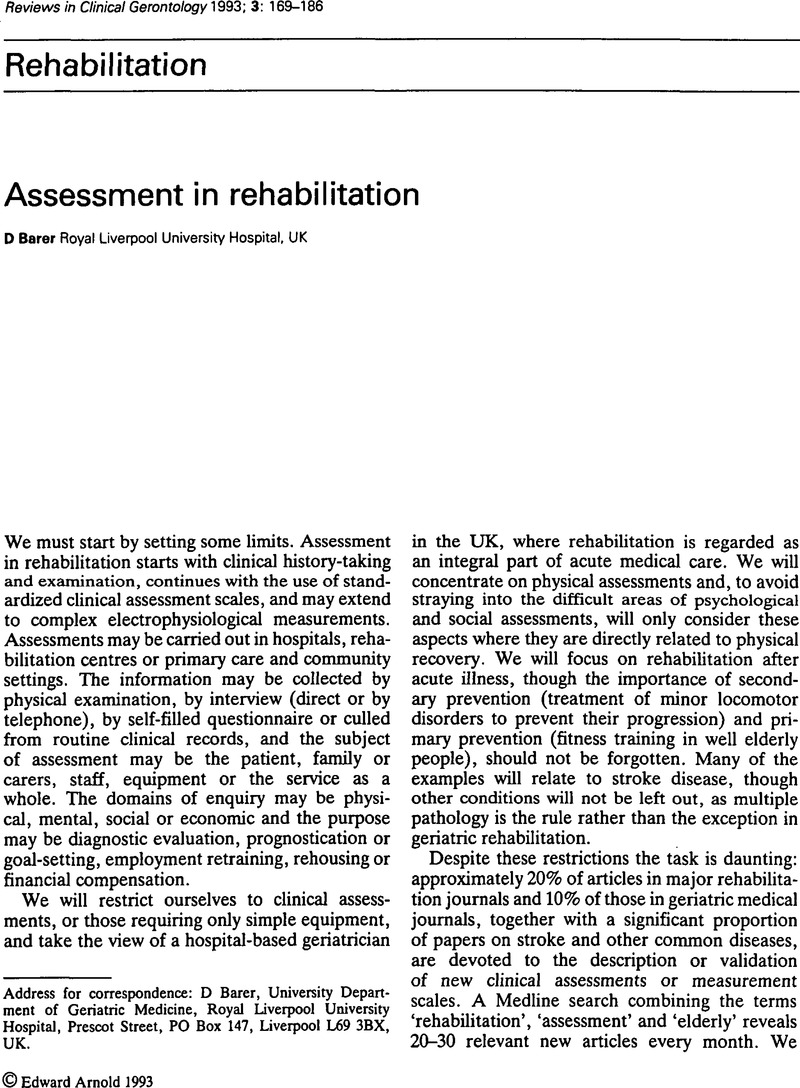Crossref Citations
This article has been cited by the following publications. This list is generated based on data provided by Crossref.
Barer, David
1995.
Narrative or systematic reviews: can we be more ‘evidence-based’?.
Reviews in Clinical Gerontology,
Vol. 5,
Issue. 4,
p.
365.
Walton, Timothy
Vincent, Mary
Richards, Jim
and
Davidson, Ian
2005.
Usefulness of digital gait analysis for assessing patients with Guillain-Barré syndrome.
International Journal of Therapy and Rehabilitation,
Vol. 12,
Issue. 9,
p.
388.
Young, John
2010.
Brocklehurst's Textbook of Geriatric Medicine and Gerontology.
p.
1.
Watts, Michael
and
Finucane, Paul
2012.
Pathy's Principles and Practice of Geriatric Medicine.
p.
1395.
Corey, Matthew T.
2022.
Pathy's Principles and Practice of Geriatric Medicine.
p.
1249.



